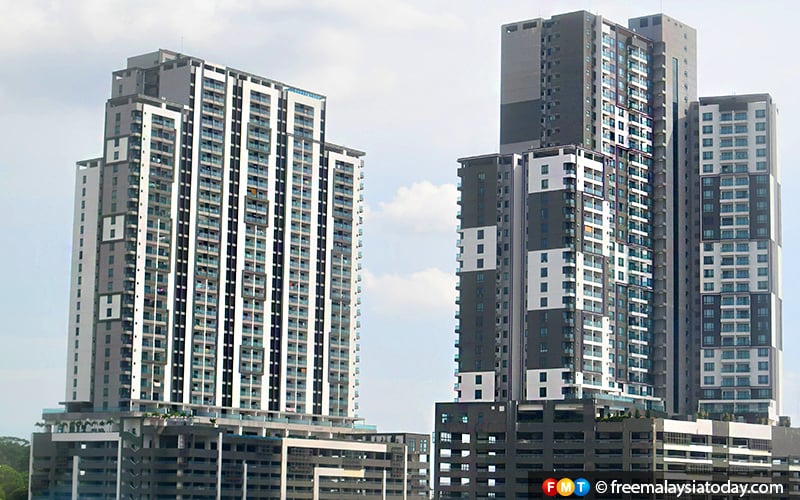
PETALING JAYA: A steady increase in property prices over an extended period of time has put home purchasing beyond the reach of many.
To this end, developers are expected to cash in by offering more build-to-rent (BTR) properties in the market, according to industry stakeholders.
The BTR concept is still relatively new in Malaysia but its potential as a growing segment of the property market is not lost on developers.
UEM Sunrise Bhd CEO Sufian Abdullah said changing lifestyles and appetites in the local market could also drive the growth of BTR.
Increases in interest rates, making it even more costly to buy a house, are another factor that will give BTR a boost, he told FMT Business.
Affordability, or the lack of it, is a frequently raised issue in Malaysia.
In its 2021 annual report, Bank Negara Malaysia (BNM) stated that “homes were severely or seriously unaffordable” in all states except Melaka.
The gradual increase in the overnight policy rate (OPR) from 1.75% to 3% since May last year has only made property ownership more unachievable.
Loan applications for the purchase of property had declined 13.4% year-on-year and 11% month-on-month in June, according to BNM.
In an environment of rising borrowing costs, the rental market is set to thrive, real estate consultancy Knight Frank Malaysia said in a recent report.
This is where the BTR concept, which has steadily gained acceptance in developed markets such as the US and UK in the past decade, comes in as a viable option.
In contrast to build-to-sell (BTS) units, BTR homes are specifically developed to be rented out. This enables tenants to gain access to professionally managed and maintained rented accommodation.
One company that has begun to explore this concept is UEM Sunrise, which has partnered with Australia-based Greystar Real Estate Partners to develop a BTR project in Collingwood, Melbourne.
“We see the potential for a substantial demand for BTR projects as people seek out more alternative housing options in addition to BTS projects,” Sufian said.
“BTR is a mature asset class in the US and UK but is still growing in Australia. The BTR sector in Australia is now worth A$16.87 billion (RM50.22 billion), which is equivalent to roughly 0.2% of total value of its residential property sector.”
Key challenges
While there is potential in BTR, developers hoping to cash in will face some challenges.
For a start, the developer or investor will have his capital tied up for a longer period, Sufian said.
“It will also take more time to see returns, which may even be lower than what you get from BTS or sell-then-build options,” he said.
Rental for BTR homes are also typically higher, given that it covers maintenance for common areas, utilities and service charges.
“In the Malaysia context, there are cheaper options in the private rental market, and high-rises already come with the full range of facilities, unlike in similar developments overseas,” he said.
BTR rents in London, for example, are typically 8% to 11% higher than in the private rental market.
Real Estate and Housing Developers Association (Rehda) president NK Tong said it may be more appropriate for BTR housing to be developed by real estate investment trusts (REITs) – as is commonly done in the US – rather than private developers.
“The BTR concept is less likely to be undertaken by private developers as their capital structures are designed to develop and sell projects, instead of renting them out,” he said.
Tong added that financial institutions also need to be comfortable with lending against such projects given BTR’s potentially lower returns compared with other asset classes.
More rental policies
Architect Tan Loke Mun pointed out that the BTR industry in Malaysia is handicapped by the lack of adequate legal protection for tenants.
He said that firstly, the notion that owners of property are superior to renters should be dispelled.
“There is nothing wrong with renting. One is not an under-achiever if he chooses to rent rather than buy a house and be held down by mortgage and repayments,” said the founder of ArchiCentre Sdn Bhd.
“Renting also suits some with careers and lifestyles that give them the flexibility to emigrate and travel with their work.”
Tan said the government should enhance tenant protection by mandating clear expectations and responsibilities to both renters and landlords – possibly through a Residential Tenancy Act (RTA).
The federal government had considered introducing an RTA in 2020. However, there has been no clear details on its timeline and provisions.
Sufian agreed that there is a lack of rental protection in Malaysia, adding that the government has so far focused on promoting home ownership.
“Meanwhile, in terms of statutory provisions and government policies, it is important to note that they generally promote home ownership – with no guidelines or fiscal incentives for those that provide rental housing.
“There is also no legislation on residential tenancy, hence the lack of clear protection of rights, duties and obligations by both landlord and tenants,” he added.














POST YOUR COMMENTS